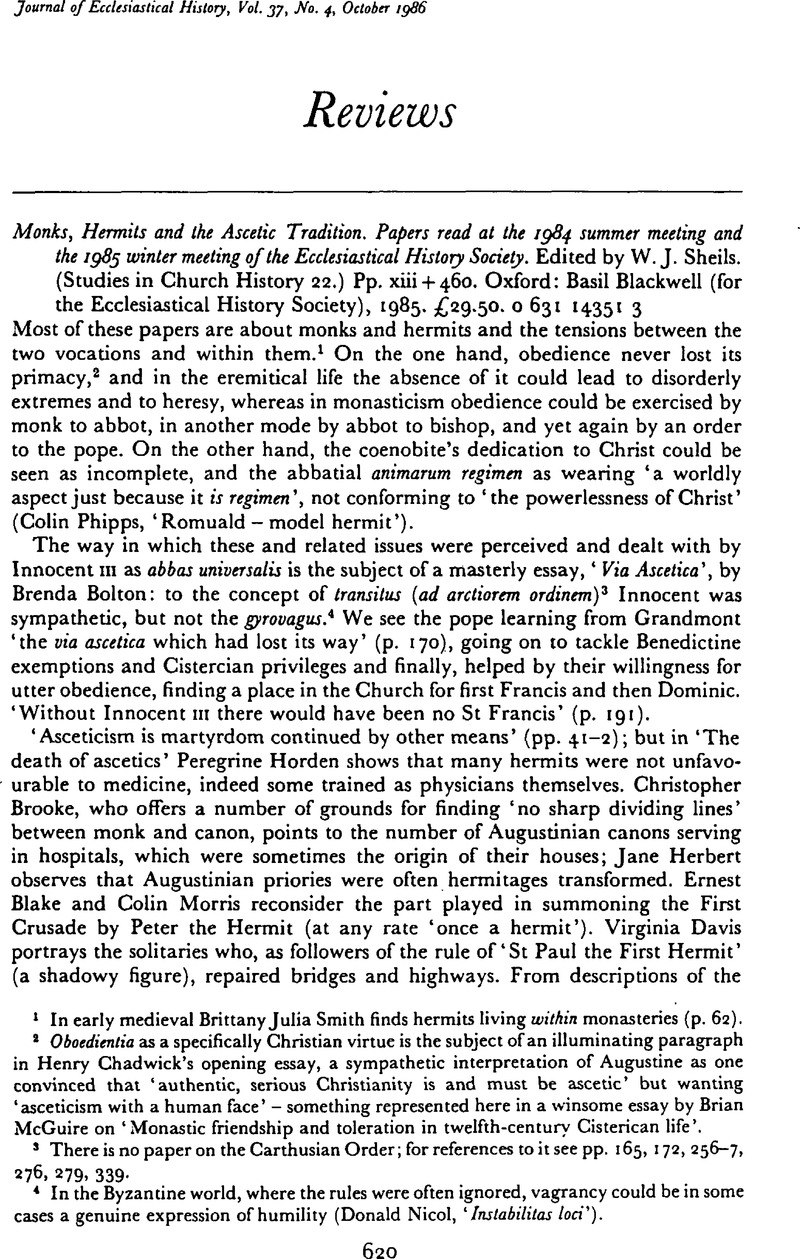Article contents
Monks, Hermits and the Ascetic Tradition. Papers read at the 1984 summer meeting and the 1985 winter meeting of the Ecclesiastical History Society. Edited by W. J. Sheils. (Studies in Church History 22.) Pp. xiii + 460. Oxford: Basil Blackwell (for the Ecclesiastical History Society), 1985. £29.50. 0 631 14351 3
Published online by Cambridge University Press: 25 March 2011
Abstract

- Type
- Reviews
- Information
- Copyright
- Copyright © Cambridge University Press 1986
References
page 620 note 1 In early medieval Smith, Brittany Julia finds hermits living within monasteries (p. 62).Google Scholar
page 620 note 2 Obocditntia as a specifically Christian virtue is the subject of an illuminating paragraph in Henry Chadwick's opening essay, a sympathetic interpretation of Augustine as one convinced that ‘authentic, serious Christianity is and must be ascetic’ but wanting ‘asceticism with a human face’ – something represented here in a winsome essay by Brian McGuire on ‘Monastic friendship and toleration in twelfth-century Cisterican life’.
page 620 note 3 There is no paper on the Carthusian Order; for references to it see pp. 165, 172, 256-7, 276, 279. 339.
page 620 note 4 In the Byzantine world, where the rules were often ignored, vagrancy could be in some cases a genuine expression of humility (Donald Nicol, ‘Instability loci’).
page 621 note 1 Maycock, A. L. suggested something like this in The Inquisition (1931), 36Google Scholar, adding: ‘St. Francis knew how to obey … Waldo did not.’
- 1
- Cited by




